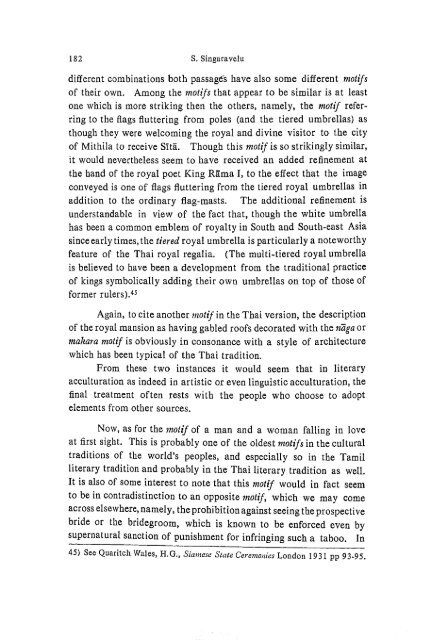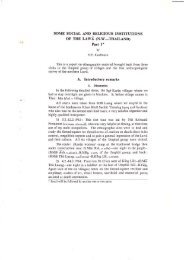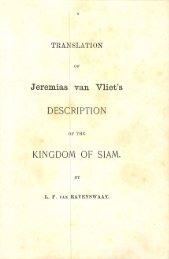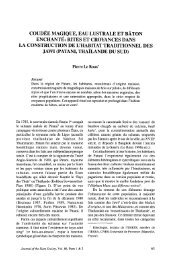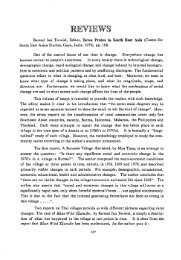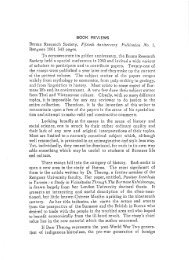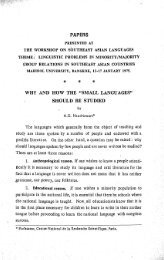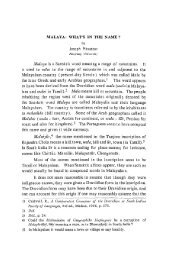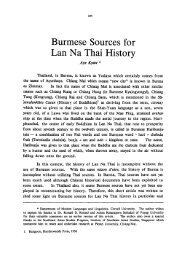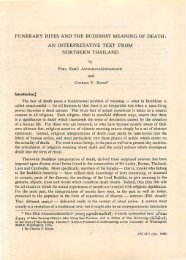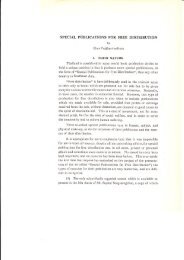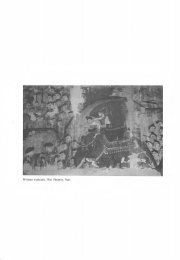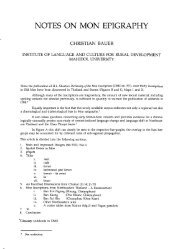A COMPARATIVE STUDY OF THE SANSKRIT, TAMIL, THAI AND ...
A COMPARATIVE STUDY OF THE SANSKRIT, TAMIL, THAI AND ...
A COMPARATIVE STUDY OF THE SANSKRIT, TAMIL, THAI AND ...
Create successful ePaper yourself
Turn your PDF publications into a flip-book with our unique Google optimized e-Paper software.
182 S. Singaravelu<br />
different combinations both passage·s have also some different motifs<br />
of their own. Among the motifs that appear to be similar is at least<br />
one which is more striking then the others, namely, the motif referring<br />
to the flags fluttering from poles (and the tiered umbrellas) as<br />
though they were welcoming the royal and divine visitor to the city<br />
of Mithila to receive Sita. Though this mottj is so strikingly similar,<br />
it would nevertheless seem to have received an added refinement at<br />
the hand of the royal poet King Rama I, to the effect that the image<br />
conveyed is one of flags fluttering from the tiered royal umbrellas in<br />
addition to the ordinary flag-masts. The additional refinement is<br />
understandable in view of the fact that, though the white umbrella<br />
has been a common emblem of royalty in South and South-east Asia<br />
since early times, the tiered royal umbrella is particularly a noteworthy<br />
feature of the Thai royal regalia. (The multi-tiered royal umbrella<br />
is believed to have been a development from the traditional practice<br />
of kings symbolically adding their own umbrellas on top of those of<br />
former rulers). 45<br />
Again, to cite another motif in the Thai version, the description<br />
of the royal mansion as having gabled roofs decorated with the naga or<br />
makara mottj is obviously in consonance with a style of architecture<br />
which has been typical of the Thai tradition.<br />
From these two instances it would seem that in literary<br />
acculturation as indeed in artistic or even linguistic acculturation, the<br />
final treatment often rests with the people who choose to adopt<br />
elements from other sources.<br />
Now, as for the motif of a man and a woman falling in love<br />
at first sight. This is probably one of the oldest mottjs in the cultural<br />
traditions of the world's peoples, and especially so in the Tamil<br />
literary tradition and probably in the Thai literary tradition as well.<br />
It is also of some interest to note that this motif would in fact seem<br />
to be in contradistinction to an opposite motif, which we may come<br />
across elsewhere, namely, the prohibition against seeing the prospective<br />
bride or the bridegroom, which is known to be enforced even by<br />
supernatural sanction of punishment for infringing such a taboo. In<br />
45) See Quaritch Wales, H. G., Siamese State Ceremonies London 1931 pp 93-95.


